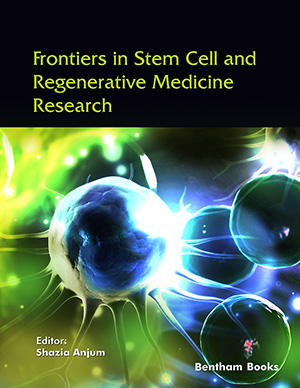
Abstract
Twin-to-twin transfusion syndrome (TTTS) is a complication of monochorionic twin pregnancies associated with high perinatal mortality and morbidity. Placental vascular anastomoses, almost invariably present in monochorionic placentas, are the essential anatomical substrate for the development of TTTS. According to recent studies, different pathophysiological mechanisms may play a role. Diagnosis of TTTS is no longer based on neonatal criteria such as birth weight discordance and hemoglobin difference, but on strict prenatal ultrasound criteria. A significant evolution in prenatal care strategies and management options for patients with TTTS has occurred during the last decade. Endoscopical laser ablation of communicating placental vessels is a new treatment modality that has led to an increase in survival rates. In perinatology, a decrease in mortality rates may be associated with an increase in morbidity rates. Follow-up studies in infants with TTTS are shedding more light on the wide range of morbidity associated with TTTS, such as neurological, cardiac and renal sequelae. This review analyzes the possible pathophysiological mechanisms involved, discusses the latest findings in diagnosis, therapy and prognosis, and focuses on neonatal and pediatric morbidity associated with TTTS.
Keywords: twin-to-twin transfusion syndrome, vascular anastomoses, amnioreduction, fetoscopic laser surgery, neurodevelopmental outcome, hypertrophic cardiomyopathy, renal failure
Current Pediatric Reviews
Title: Twin-to-Twin Transfusion Syndrome: From Placental Anastomoses to Long-Term Neurodevelopmental Outcome
Volume: 1 Issue: 3
Author(s): Enrico Lopriore, Johanna M. Middeldorp, Marieke Sueters, Frank P. Vandenbussche and Frans J. Walther
Affiliation:
Keywords: twin-to-twin transfusion syndrome, vascular anastomoses, amnioreduction, fetoscopic laser surgery, neurodevelopmental outcome, hypertrophic cardiomyopathy, renal failure
Abstract: Twin-to-twin transfusion syndrome (TTTS) is a complication of monochorionic twin pregnancies associated with high perinatal mortality and morbidity. Placental vascular anastomoses, almost invariably present in monochorionic placentas, are the essential anatomical substrate for the development of TTTS. According to recent studies, different pathophysiological mechanisms may play a role. Diagnosis of TTTS is no longer based on neonatal criteria such as birth weight discordance and hemoglobin difference, but on strict prenatal ultrasound criteria. A significant evolution in prenatal care strategies and management options for patients with TTTS has occurred during the last decade. Endoscopical laser ablation of communicating placental vessels is a new treatment modality that has led to an increase in survival rates. In perinatology, a decrease in mortality rates may be associated with an increase in morbidity rates. Follow-up studies in infants with TTTS are shedding more light on the wide range of morbidity associated with TTTS, such as neurological, cardiac and renal sequelae. This review analyzes the possible pathophysiological mechanisms involved, discusses the latest findings in diagnosis, therapy and prognosis, and focuses on neonatal and pediatric morbidity associated with TTTS.
Export Options
About this article
Cite this article as:
Lopriore Enrico, Middeldorp M. Johanna, Sueters Marieke, Vandenbussche P. Frank and Walther J. Frans, Twin-to-Twin Transfusion Syndrome: From Placental Anastomoses to Long-Term Neurodevelopmental Outcome, Current Pediatric Reviews 2005; 1 (3) . https://dx.doi.org/10.2174/157339605774574999
| DOI https://dx.doi.org/10.2174/157339605774574999 |
Print ISSN 1573-3963 |
| Publisher Name Bentham Science Publisher |
Online ISSN 1875-6336 |
 2
2
- Author Guidelines
- Graphical Abstracts
- Fabricating and Stating False Information
- Research Misconduct
- Post Publication Discussions and Corrections
- Publishing Ethics and Rectitude
- Increase Visibility of Your Article
- Archiving Policies
- Peer Review Workflow
- Order Your Article Before Print
- Promote Your Article
- Manuscript Transfer Facility
- Editorial Policies
- Allegations from Whistleblowers
Related Articles
-
Diabetes and Chronic Heart Failure: From Diabetic Cardiomyopathy to Therapeutic Approach
Endocrine, Metabolic & Immune Disorders - Drug Targets Regulatable Gene Expression Systems for Gene Therapy
Current Gene Therapy Myocardial Perfusion and Coronary Vasomotor Function: Emerging Role of PET Imaging
Vascular Disease Prevention (Discontinued) Mitochondrial Superoxide Dismutase - Signals of Distinction
Anti-Cancer Agents in Medicinal Chemistry Role of Iodine, Selenium and Other Micronutrients in Thyroid Function and Disorders
Endocrine, Metabolic & Immune Disorders - Drug Targets Anti-HER2 Cancer Therapy and Cardiotoxicity
Current Pharmaceutical Design Expression and Function of MicroRNAs in Heart Disease
Current Drug Targets Electrotransfer into Skeletal Muscle for Protein Expression
Current Gene Therapy Assessment of Cardiac Sympathetic Innervation in Heart Failure and Lethal Arrhythmias: Therapeutic and Prognostic Implications
Current Cardiology Reviews Erythropoietin: New Horizon in Cardiovascular Medicine
Recent Patents on Cardiovascular Drug Discovery Parkinson’s Disease: Is there a Role for Dietary and Herbal Supplements?
CNS & Neurological Disorders - Drug Targets Meet Our Editorial Board Member:
Current Diabetes Reviews Proteome and Metabolome Alterations in Heart and Liver Indicate Compromised Energy Production During Sepsis
Protein & Peptide Letters Reducing the Risk of Major Elective Non-cardiac Surgery: Is there a Role for Levosimendan in the Preoperative Optimization of Cardiac Function?
Current Drug Targets Fetal Risks of Maternal Diabetes
Current Women`s Health Reviews Pediatric Heart Failure in the Developing World
Reviews on Recent Clinical Trials Chronic Eosinophilic Leukemia, Not Otherwise Specified (CEL, NOS)
Current Cancer Therapy Reviews Benefits of L-Arginine on Cardiovascular System
Mini-Reviews in Medicinal Chemistry Cardiac Side Effects of Chemotherapy: State of Art and Strategies for a Correct Management
Current Vascular Pharmacology Strategy for a Genetic Assessment of Antipsychotic and Antidepressant- Related Proarrhythmia
Current Medicinal Chemistry


























